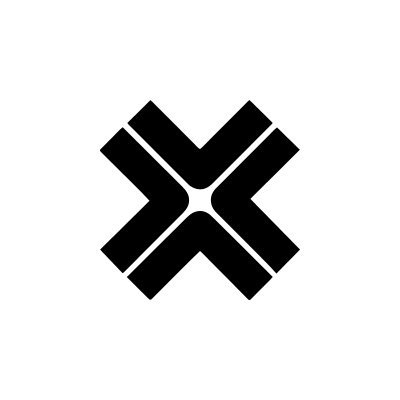Scaling solved fees, now we need to solve fragmentation.
But ETH doesn’t need more bridges, it needs one standard.
ERC-7786 delivers that ⤵️
Scaling via L2s has become Ethereum's biggest problem:
50+ isolated rollups with fragmented liquidity and complex bridges.
Cross-chain solutions exist, but we need standards to unite them.
Here's how interop standards could revitalize ETH:
First, let's understand how we got here.
Ethereum had a scaling problem during the last cycle. Gas fees peaked at $100+ per transaction as users competed for block space.
Layer 2 rollups emerged to fix this issue, and they worked.
Base, Arbitrum, Optimism, and dozens of others successfully expanded Ethereum's capacity, with fees now counted in cents.
But they also created a new problem: Fragmentation.
Users now must navigate between isolated ecosystems that don't talk to each other. The real-world impact is significant. Imagine you have funds on Optimism but want to use an app on Base. You need to:
• Find a bridge
• Pay expensive fees
• Wait for finality periods
• Manage multiple wallets
The user experience is challenging, to say the least. But interoperability standards are currently being developed to unify the Ethereum ecosystem.
Generally, I am not a fan of standards; however, the lack of standards in this situation has resulted in repeated bottlenecks for developers.
Let's break some of them down:
1. The first interop standard on our list is Across and Uniswap's intent standard (ERC-7683).
Intents allow users to express what they want (swap token X on @base
for token Y on @arbitrum), and then "solvers" will compete to fulfill the order in the most optimized path.
Here's how it works:
When you request a cross-chain swap, a decentralized network of "solvers" competes to fulfill your order. They front the liquidity and provide quick fulfillment, while final settlement occurs later via secure cross-chain messaging.
This is fundamentally different from traditional bridges, where:
• You lock tokens in a contract on chain A
• Wait for confirmation (often minutes or hours)
• Then get wrapped tokens on chain B
Intent-based approaches put user experience first, with settlement happening afterward.
The ERC-7683 standard aims to ensure that protocols share information in a consistent language so that any solver in the decentralized network can understand the order and carry it out.
And ERC-7683 isn't the only standard trying to tackle cross-chain fragmentation.
2. There are multiple other standards trying to stitch isolated rollups together.
Here is a brief breakdown:
• RIP-7755: Enables trustless transactions between rollups via a permissionless network of fulfillers.
• RIP-7859: Exposes Layer 1 origin information inside Layer 2 environments, improving cross-chain data verification.
• ERC-7828: Introduces chain-specific addresses in ENS, reducing confusion when sending assets across different chains.
Each of these standards is a step toward solving isolated ecosystems. However they all face the same underlying issue:
We still need a common language for chains to communicate at the base layer. Without that, fragmentation persists.
To truly scale Ethereum's app layer across chains, the above standards and developers need a shared language.
3. That brings us to ERC-7786, a proposed universal interface for messaging between blockchains.
It’s like agreeing on a mailing address format, so that UPS, FedEx, or DHL can all deliver your package.
Proposed by @OpenZeppelin and @interop_labs (the developer of the @axelar Network), ERC-7786 is minimal by design, built to be lightweight and modular. The goal is to reduce vendor lock-in and enable true cross-chain native applications.
ERC-7786 standardizes:
• Message field encoding
• Sending & receiving logic
• Security guarantees
• Optional “attributes” for protocol-specific behavior
The standard is designed to be flexible, so developers can write code once and deploy it across multiple chains (including L2s and non-EVM environments).
"Chain abstraction" remains the ultimate goal:
• Users shouldn't need to know which chain they're on.
• Wallets should work everywhere.
• Assets should be able to move freely.
Right now, capital is inefficiently locked in dozens of bridge contracts. Meanwhile, developers waste time learning multiple proprietary interfaces while users bear the cost of complexity.
Standardization creates a rising tide that lifts all boats.
In the history of technology, open standards consistently accelerate ecosystem growth.
TCP/IP united the internet, HTTP standardized the web, and now, interop standards will reunite Ethereum's ecosystem.

5,73 mil
0
O conteúdo desta página é fornecido por terceiros. A menos que especificado de outra forma, a OKX não é a autora dos artigos mencionados e não reivindica direitos autorais sobre os materiais apresentados. O conteúdo tem um propósito meramente informativo e não representa as opiniões da OKX. Ele não deve ser interpretado como um endosso ou aconselhamento de investimento de qualquer tipo, nem como uma recomendação para compra ou venda de ativos digitais. Quando a IA generativa é utilizada para criar resumos ou outras informações, o conteúdo gerado pode apresentar imprecisões ou incoerências. Leia o artigo vinculado para mais detalhes e informações. A OKX não se responsabiliza pelo conteúdo hospedado em sites de terceiros. Possuir ativos digitais, como stablecoins e NFTs, envolve um risco elevado e pode apresentar flutuações significativas. Você deve ponderar com cuidado se negociar ou manter ativos digitais é adequado para sua condição financeira.


